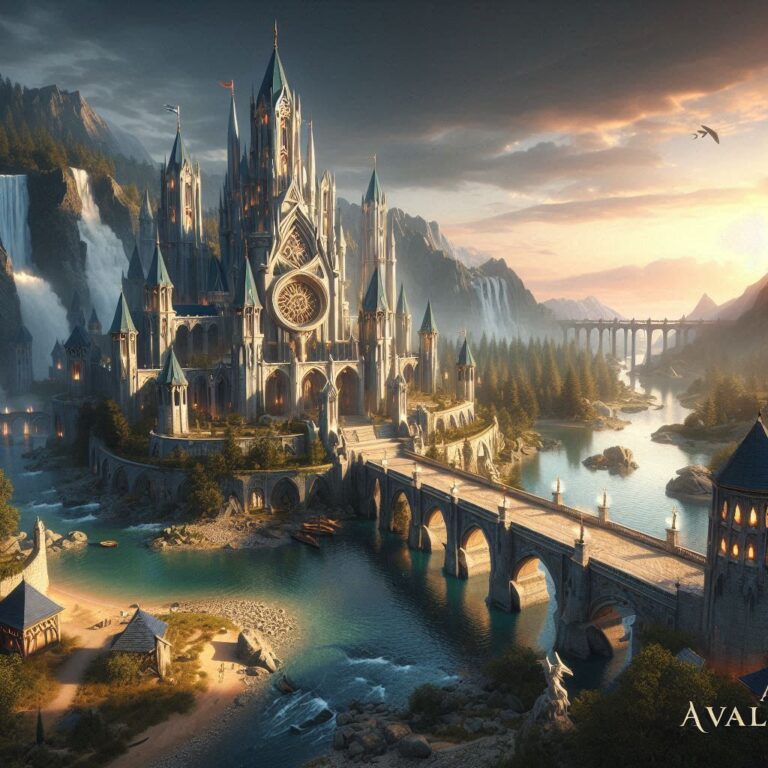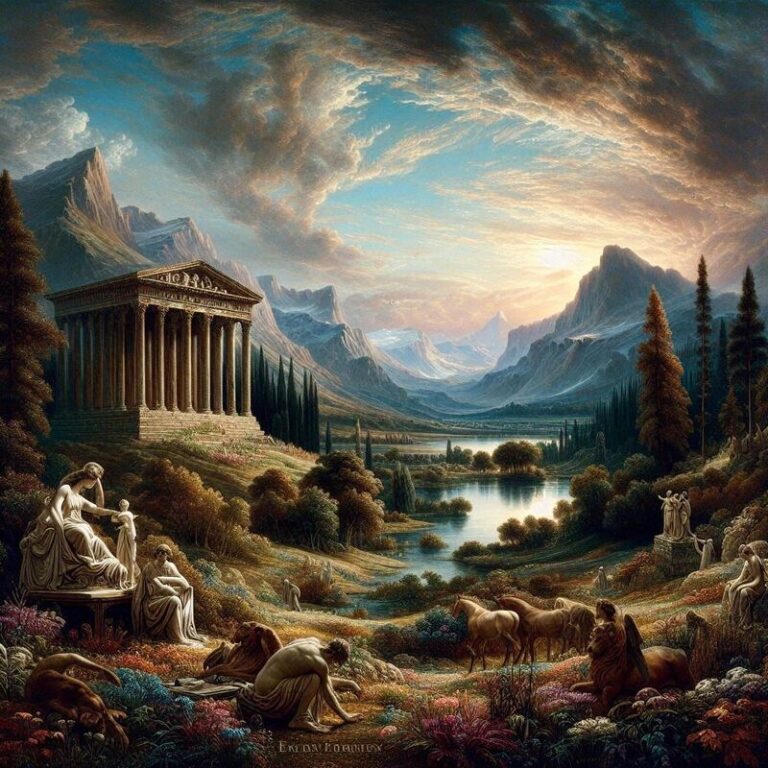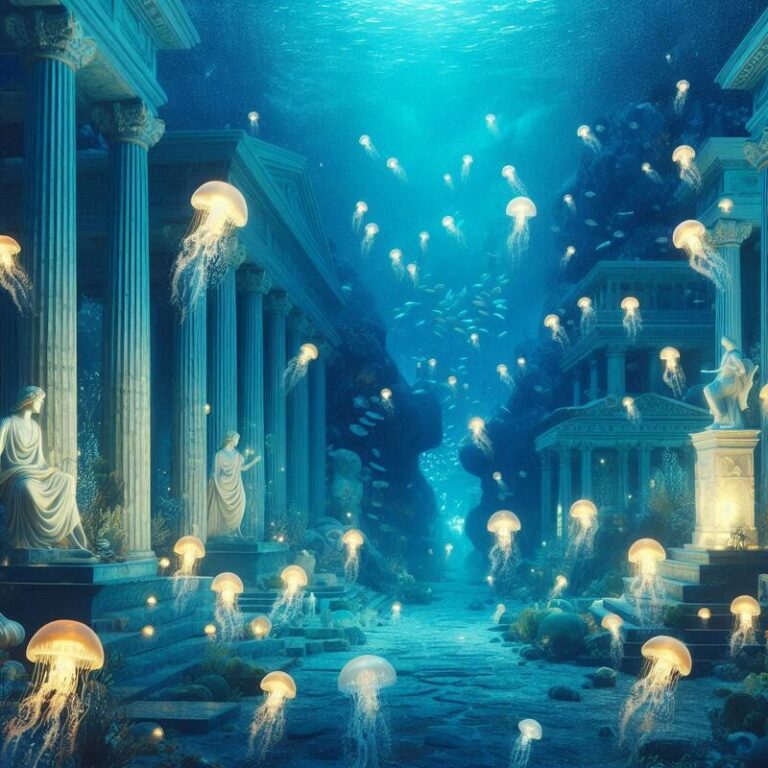Camelot Legendary Citadel of Honor and Justice

Camelot Legendary Citadel of Honor and Justice
Camelot: Legendary Citadel of Honor and Justice
Camelot, the fabled city of King Arthur and his knights of the Round Table, stands as a beacon of honor, justice, and chivalry in the realm of Arthurian legend. This mythical citadel has captured the imaginations of people for centuries, inspiring tales of bravery, romance, and the eternal quest for a better world. As we delve into the realm of Camelot, we uncover its origins, its iconic figures, its timeless ideals, and its enduring legacy in literature and culture.
Origins and Mythical Setting
Camelot Legendary Citadel of Honor and Justice
The origins of Camelot are rooted in medieval literature and folklore, particularly in the Arthurian legends that began to take shape in the 12th century. The earliest known references to Camelot appear in French romances and chronicles, where it is described as the court and stronghold of King Arthur, the legendary ruler of Britain. Camelot is often depicted as a majestic castle surrounded by lush landscapes, symbolizing a realm where noble ideals and heroic deeds flourish.
Geoffrey of Monmouth, a Welsh cleric and historian, played a pivotal role in popularizing the tales of King Arthur and Camelot in his work “Historia Regum Britanniae” (History of the Kings of Britain), written around 1136. In Geoffrey’s narrative, Camelot serves as the political and cultural center of Arthur’s kingdom, where the famed Round Table was established—a symbol of equality and unity among Arthur’s knights. Camelot Legendary Citadel of Honor and Justice
The Round Table: Symbol of Equality and Brotherhood

Camelot Legendary Citadel of Honor and Justice
Central to the mythos of Camelot is the Round Table, a legendary gathering place where Arthur’s knights convened to discuss matters of governance, embark on quests of honor, and uphold the principles of chivalry. The Round Table symbolizes equality among Arthur’s knights, as it lacks a head to denote superiority, emphasizing instead the unity and camaraderie among its members.
The concept of the Round Table reflects Arthur’s vision of a just and harmonious society, where meritocracy and fairness prevail over birthright or status. Each knight of the Round Table, from the noble Sir Lancelot to the valiant Sir Gawain, pledged themselves to a code of conduct that prioritized bravery, loyalty, and compassion towards the weak and oppressed. Their adventures and quests served as allegories for the moral and spiritual journeys of individuals seeking to live according to principles of integrity and righteousness.
Legendary Figures of Camelot
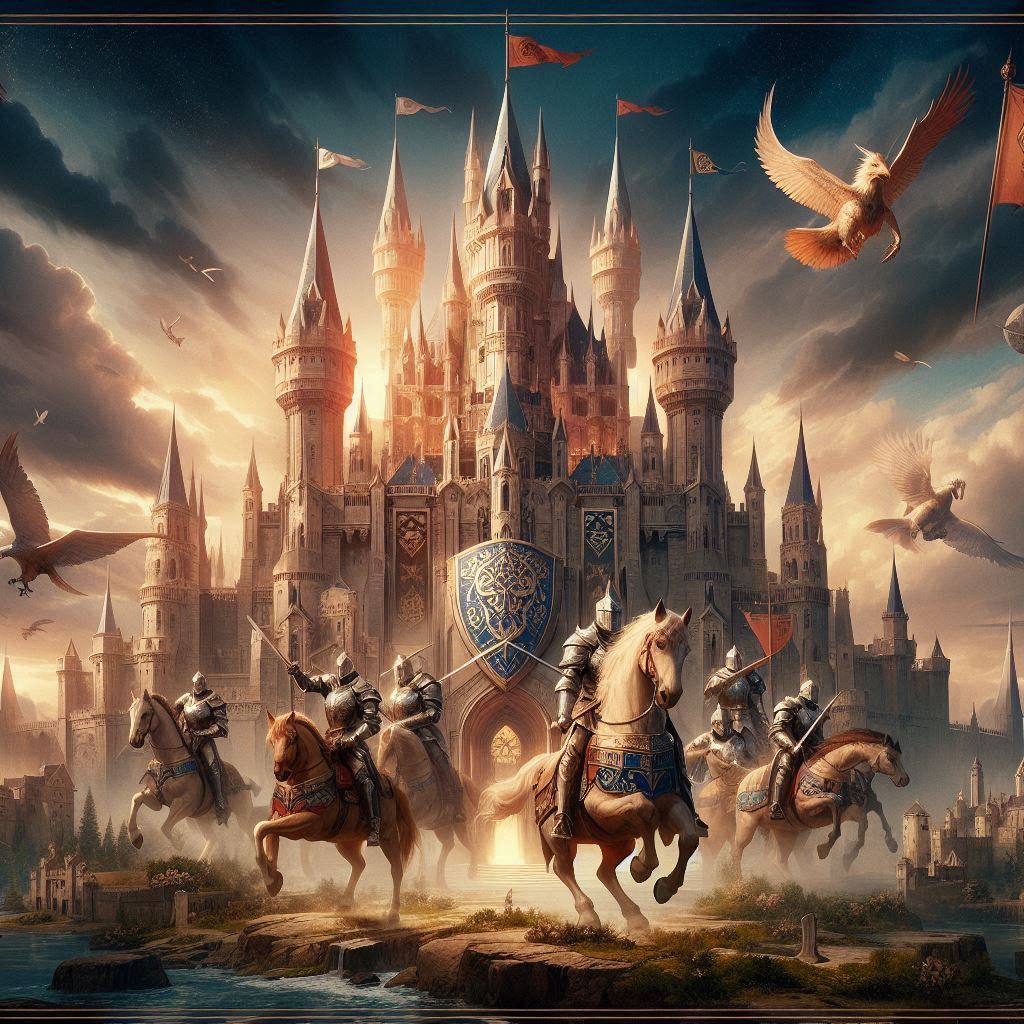
Camelot Legendary Citadel of Honor and Justice
At the heart of Camelot are its iconic figures whose stories have become intertwined with the fabric of Arthurian legend. King Arthur himself, the noble and just ruler destined to wield Excalibur, the legendary sword forged by the Lady of the Lake, embodies the ideals of leadership and sacrifice. His quest to unite Britain and establish a reign of peace and prosperity is central to the Camelot narrative, illustrating the challenges and responsibilities that come with wielding power.
Guinevere, Arthur’s beloved queen, is another pivotal figure whose beauty and tragic love affair with Sir Lancelot have become integral to the Camelot saga. Lancelot, Arthur’s most trusted knight and champion, epitomizes the virtues of chivalry and honor but also grapples with personal conflicts and moral dilemmas, particularly his forbidden love for Guinevere. Their complex relationships underscore the human frailties and emotional complexities that shape the destiny of Camelot.
Merlin the wizard, with his mystical powers and prophetic wisdom, serves as Arthur’s advisor and mentor, guiding him through trials and tribulations on his quest to fulfill his destiny. Other notable characters include the brave Sir Gawain, the noble Sir Percival, and the treacherous Mordred, Arthur’s illegitimate son who ultimately brings about the downfall of Camelot through his betrayal. Camelot Legendary Citadel of Honor and Justice
Themes and Ideals of Camelot
Camelot Legendary Citadel of Honor and Justice
Camelot resonates with timeless themes and ideals that continue to resonate with audiences worldwide. Central to these themes is the concept of honor and chivalry, as embodied by Arthur and his knights. The knights of the Round Table exemplify the virtues of courage, loyalty, and selflessness in their pursuit of justice and righteousness. Their exploits and adventures symbolize the eternal struggle between good and evil, highlighting the moral complexities and ethical dilemmas faced by individuals in positions of power.
Another prominent theme in the Camelot narrative is the quest for a better world, where Arthur seeks to establish a kingdom governed by principles of fairness, compassion, and equality. Camelot represents a utopian ideal—a realm where dreams of a just society are realized through the collective efforts of its inhabitants. The tragic elements of the Camelot story, including the betrayal of trust and the consequences of moral compromise, serve as cautionary tales about the fragility of noble ideals in the face of human ambition and frailty.
Camelot in Literature and Culture
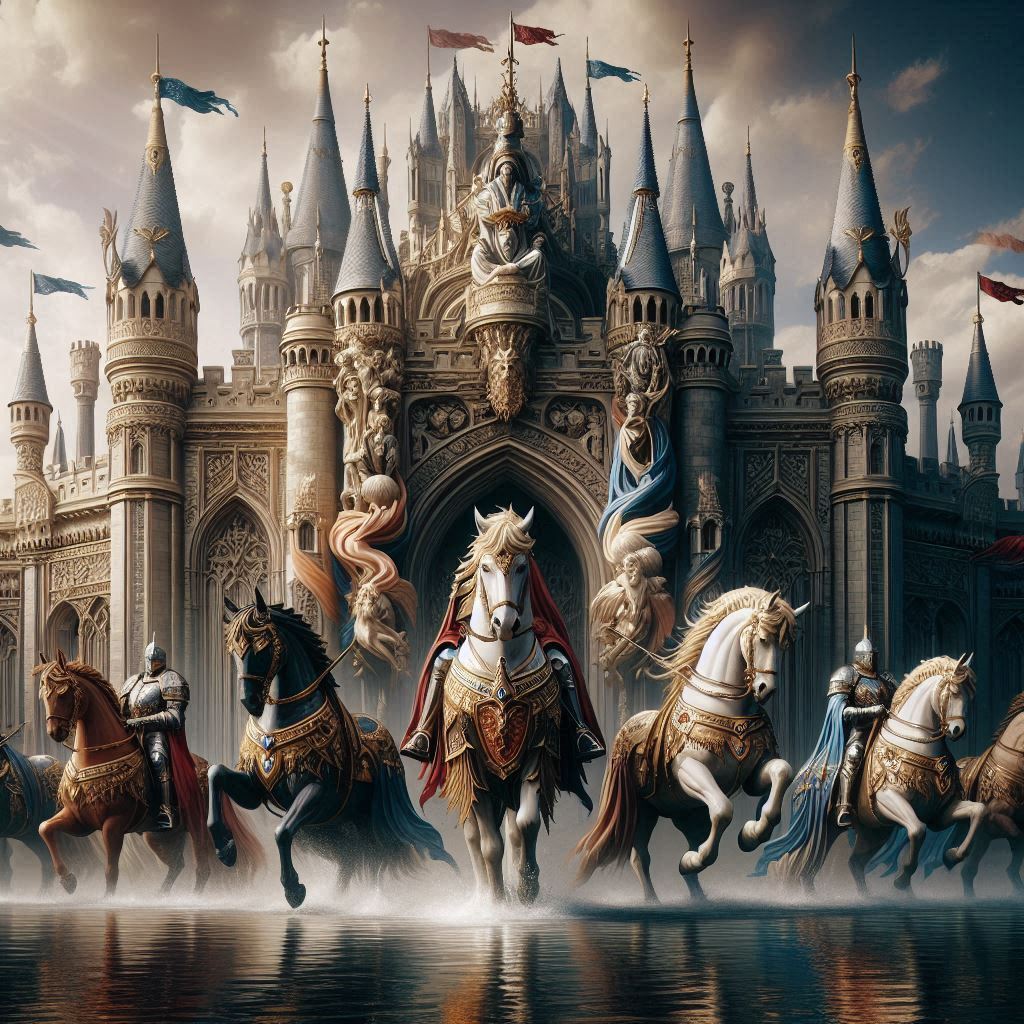
Camelot Legendary Citadel of Honor and Justice
The enduring legacy of Camelot is evident in its continued influence on literature, art, and popular culture. Countless authors, poets, playwrights, and filmmakers have drawn inspiration from the Arthurian legends, offering their own interpretations and adaptations of the Camelot story.
Thomas Malory’s “Le Morte d’Arthur,” a seminal work in Arthurian literature, consolidates and expands upon the Camelot saga, presenting a comprehensive narrative of Arthur’s life and reign. Alfred, Lord Tennyson’s epic poem “Idylls of the King” and Mark Twain’s satirical novel “A Connecticut Yankee in King Arthur’s Court” are among the many works that have contributed to the enduring popularity of Camelot.
In art and music, Camelot has been depicted in countless paintings, sculptures, and musical compositions that capture the mythical beauty and grandeur of Arthurian legend. The Broadway musical “Camelot,” with lyrics by Alan Jay Lerner and music by Frederick Loewe, premiered in 1960 and became a beloved classic, further cementing Camelot’s place in popular culture.
Camelot Legendary Citadel of Honor and Justice
Conclusion
Camelot endures as a symbol of honor, justice, and the eternal quest for a better world. Its timeless appeal lies in its portrayal of noble ideals and heroic virtues that resonate with audiences of all ages. Whether as a metaphor for leadership and moral integrity or as a captivating tale of love and betrayal, Camelot continues to inspire and captivate us with its enduring legacy. Camelot Legendary Citadel of Honor and Justice
As we reflect on the myths and legends of Camelot, we are reminded of the universal truths and timeless lessons that lie at the heart of this legendary citadel. Camelot stands as a testament to the power of storytelling and the enduring appeal of ideals that transcend time and place. In the words of T.H. White, author of “The Once and Future King,” “Camelot stands for the magic of imagination, the beauty of ideals, and the strength of virtue.” It is a legacy that continues to inspire and enchant us, inviting us to embark on our own quests for truth, justice, and a world where honor and justice prevail.
